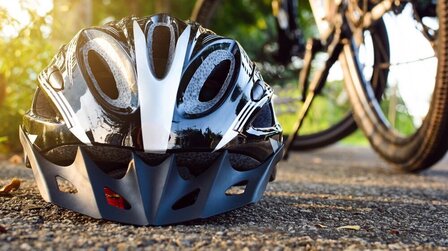While a lot of pros choose to move to another place at a higher elevation to practice, there are many alternatives to training for people who live at or below the sea level plus they don’t have enough conditions to leave the current place.
If you are wondering “how do you train for high altitude at low altitude?”, then here are some tried-and-true techniques to follow.
How Do You Train For High Altitude At Low Altitude?
All the techniques I mentioned below aim to train your body under the condition of lower oxygen saturation in the blood to hence increase EPO (the hormone erythropoietin).
EPO will then encourage the body to produce more red blood cells, carrying more oxygen in your blood. As a result, you will feel easier and better at high elevations.
A reliable study said that EPO can increase by up to 24% after you lower oxygen saturation to 91% for a couple of minutes.
Technique To Imitate Altitude Pressure
The technique is about putting on extra clothing.

The concept is pretty simple and straightforward - wearing extra clothes puts pressure on the surface of your body with humidity and/or heat, which decreases blood to go to your organs and muscles, resulting in less oxygen.
Here is how to train: Running in midday while wearing gloves, long-sleeved t-shirts, and sports pants. Summer is the best time for training.

Important notes:
High heat is probably bad for some individuals, especially beginners. Passing out or puking might happen.
Breathing Technique
The concept of this breathing technique is to imitate the low oxygen saturation at high altitude by using a mouthpiece.
It forces you to breathe more deeply and efficiently to hence train your respiratory skills and enhance your lung capacity. You should learn about diaphragmatic breathing techniques first.

In terms of mouthpieces, there is a wide range of types on the market, such as standard mouthpieces, Darth Vader/ski mask type respirators, and double-bite mouthpieces.

For people on a tight budget and those who are usually practicing outdoors, a standard mouthpiece is a good choice. You won’t look too odd when running in a park or on a road.
Double-bite mouthpieces are on the next level of difficulty, which is best for people who intend to join in a race at a higher altitude. But they would be better to be used indoors.

Darth Vader/ski mask type respirators are the most expensive and will make look extremely weird if worn while exercising outdoors. So, only consider this option if you have a lot of money and have a home gym.
Breath-Holding Technique
The technique not only increases red blood cells but also lets your body get used to higher CO2 concentrations – which means when CO2 levels are high and O2 levels are low, you won’t be out of breath or hyperventilating.
Find a comfortable seating place and let’s get started!
After breathing normally through your nose for a minute, breathe out and hold your breath as long as possible. Plug your nose if needed.

Once it reaches your limit, breathe again as fast as possible through your nose for 1 to 2 minutes. Repeat 3-5 times. Practice this technique once per day.
Advanced training:
For intermediate-level trainers who already master the technique, make an upgrade by practicing it while walking or performing light exercises.

For example, start with walking at your comfortable speed within 1-2 minutes, only breathing through your nose. Then, breathe out, and hold your breath. Start the breath-holding technique while still walking or exercising.
Important notes:
The technique should be practiced every day before the D-day.
You might feel unpleasant during the first time practicing the technique
This technique should not be practiced while you’re driving a car, in the water, or anywhere with potential danger.
Optional: Training your body to adapt to being dehydrated while at a high altitude.

This extra training session is for ultramarathons, backpackers, and hikers.
During a race, the only way to rehydrate your body is at aid stations, which is limited. Or, when you’re backpacking or hiking at high elevations on a multi-day trip, the quantity of water you can pack is limited.
Without training your body to adapt to being dehydrated ahead, the irritating and unpleasant feeling will be doubled while at a high altitude.
Other Tips While Running/hiking At High Altitude
Keep Your Body Hydrated
During a marathon at a high altitude, remember to drink as much water as you can at every aid station, even if you don’t feel thirsty at that time.

This might sound not quite relevant to the technique of getting used to dehydration but in fact, will be like a royal treatment to your body while on a race. Therefore, you’ll feel stronger and more encouraged than usual.
Get To Lower Elevation As Soon As Possible
The less the time at the top, the stronger and better the feeling.

When you minimize time at higher altitude and more time at a lower altitude, your body will recover more quickly with less chance of being hammered.
Conclusion
And, that is how you can train for high altitude at low altitude. To easily track your training process, I highly recommend buying a pulse oximeter – a device that can help check your oxygen saturation. Thanks a lot for reading!











